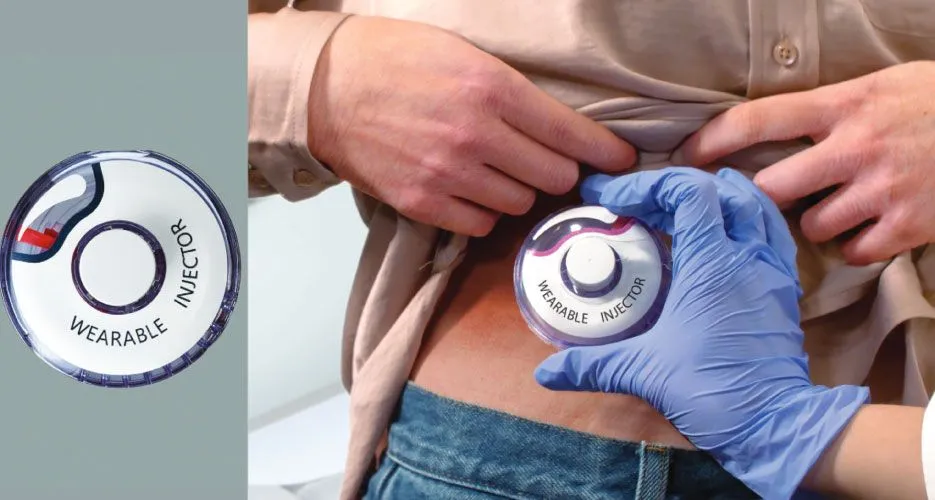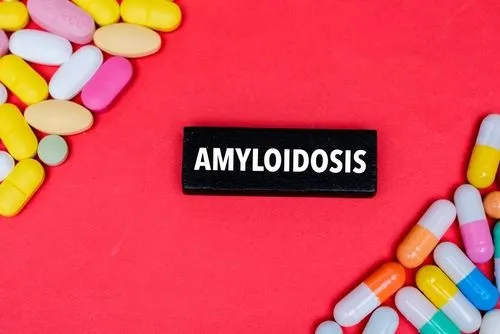Dr. Ola Landgren's Favorite #ASH19 Myeloma Abstracts and WHY He Chose Them!

The American Society of Hematology 2019 (ASH) meeting will be held the first week of December. It is the largest meeting in the world on blood cancers. It is very important to know why these outstanding myeloma specialists have chosen these abstracts as the most significant. The last blog post from Myeloma Crowd's #ASH19 coverage provides a list of those abstracts which had been chosen, however some like Dr. Rajkumar, Dr. Landgren, and Dr. Durie have also included a discussion of WHY they made these selections. As we get more input from myeloma specialists on the WHY they chose specific abstracts, we will be publishing them as separate posts and include the Reason For Selection. The WHY is something every myeloma patient advocate feels is critical to making knowledgeable treatment choices. All the abstracts chosen by the myeloma specialists will be included in the Summary Post at the link: CLICK HERE Dr. Landgren provides a list of his most important myeloma abstracts below.

Dr. C. Ola Landgren is the Chief of the Myeloma Service in the Division of Hematologic Oncology at Memorial Sloan Kettering Cancer Center and Professor of Medicine at Weill Cornell Medical College. Previously, Dr. Landgren was the Chief of the Multiple Myeloma Section at the National Cancer Institute (NCI) in the Center for Cancer Research. He is a world renowned myeloma specialist, a very patient centric clinician, and an outstanding and compassionate human being.
For his top 10 ASH abstracts, Dr. Landgren states, "I have focused on:
(1) exciting work focusing on early drug development;
(2) “newest new” regarding treatment for newly diagnosed multiple myeloma using modern 4-drug combinations;
(3) important novel biological insights that help and bring better clarity on “optimal timing for the start of therapy” both in the newly diagnosed and relapsed setting; and
(4) one Phase 2 study showing how plasma cell leukemia can be treated with modern outpatient-based KRd combination therapy (and here showing 0% mortality!) – a clinically important study with results relevant for a small group of patients with historically dismal prognosis."
Abstract 143 - First Clinical Study of the B-Cell Maturation Antigen (BCMA) 2+1 T Cell Engager (TCE) CC-93269 in Patients (Pts) with Relapsed/Refractory Multiple Myeloma (RRMM): Interim Results of a Phase 1 Multicenter Trial
Presenter: Luciano Costa
Session: 653. Myeloma: Therapy, excluding Transplantation: New Approaches in the Treatment of Relapsed/Refractory Plasma Cell Discrasias
Saturday, December 7, 2019: 9:30 AM-11:00 AM
Hall E1 (Orange County Convention Center)
Reason For Selection: In this Phase I study the investigators show that CC-93269, a 2+1 BCMA TCE has a manageable safety profile and very promising efficacy. Specifically, they show MRD-negativity in 9 of 12 (75%) patients treated with a 6 mg dose. These results are impressive particularly since the study was based on patients with heavily pretreated relapsed/refactory myeloma. The study continues to enroll in the dose escalation phase. Updated safety and efficacy data will be presented at the meeting.
Abstract 136 - Optimal Dual-Targeted CAR Construct Simultaneously Targeting Bcma and GPRC5D Prevents Bcma-Escape Driven Relapse in Multiple Myeloma
Presenter: Carlos Fernandez de Larrea
Session: 652. Myeloma: Pathophysiology and Pre-Clinical Studies, excluding Therapy: Modeling Cellular Immunity and Tumor Microenvironment in Multiple Myeloma
Saturday, December 7, 2019: 9:30 AM-11:00 AM
Valencia A (W415A) (Orange County Convention Center)
Reason For Selection: The results indicate that upfront dual targeting of BCMA/GPRC5D with CAR T cells can mitigate BCMA escape-mediated relapse in a model of myeloma. While parallel infusion of separate BCMA- and GPRC5D-targeted CAR T cells is effective, a single bicistronic vector encoding two 4-1BB-containing CARs avoids the practical challenges of parallel manufacturing, and uniquely may provide superior anti-myeloma efficacy.
Abstract 142 - T(11;14) and High BCL2 Expression Are Predictive Biomarkers of Response to Venetoclax in Combination with Bortezomib and Dexamethasone in Patients with Relapsed/Refractory Multiple Myeloma: Biomarker Analyses from the Phase 3 Bellini Study
Presenter: Simon Harrison
Session: 653. Myeloma: Therapy, excluding Transplantation: New Approaches in the Treatment of Relapsed/Refractory Plasma Cell Discrasias
Saturday, December 7, 2019: 9:30 AM-11:00 AM
Hall E1 (Orange County Convention Center)
Reason for Selection: Overexpression of the anti-apoptotic BCL-2 protein promotes multiple myeloma cell survival. Venetoclax is a highly selective, potent, oral BCL-2 inhibitor that induces apoptosis and has shown synergistic activity with bortezomib (B) and dexamethasone (d). Phase 1 studies in relapsed/refractory myeloma demonstrated encouraging clinical efficacy of Venetoclax plus dexamethasone in t(11;14) myeloma and in a broader patient population in combination with bortezomib/dex. Recent results from the Phase 3 BELLINI study of Venetoclax vs placebo (Pbo) + Bd in patients with relapsed myeloma demonstrated that patients treated with Ven + Bd had improved clinical response rates and progression-free survival (PFS) vs placebo, although the overall survival result was in favor of placebo. Subgroup analyses showed different efficacy and survival outcomes based on tumor cytogenetics and BCL-2 expression. This study is based on pre-specified subgroup analyses and additional retrospective correlative biomarker analyses within the Phase 3 BELLINI study. The investigators conclude that adding Ven to Bd demonstrates significant efficacy for relapsed patients with either t(11;14) or tumor cells expressing high levels of BCL2. The benefit-risk profile is favorable in these subsets of patients; additional studies to obtain further information regarding safety and efficacy are warranted.
Abstract 862 - Weekly Carfilzomib, Lenalidomide, Dexamethasone and Daratumumab (wKRd-D) Combination Therapy Provides Unprecedented MRD Negativity Rates in Newly Diagnosed Multiple Myeloma: A Clinical and Correlative Phase 2 Study
Presenter: Ola Landgren
Session: 653. Myeloma: Therapy, excluding Transplantation: Improving the Outcomes of Newly Diagnosed Multiple Myeloma
Monday, December 9, 2019: 4:30 PM-6:00 PM
Hall E2 (Orange County Convention Center)
Reason For Selection: Among patients evaluable for the MRD primary end-point, in the absence of an autologous bone marrow transplant, this Phase II study shows an unprecedented 15/18 (83%) MRD negativity rate among newly diagnosed multiple myeloma patients treated on the weekly cohort (wKRd-D) using carfilzomib 56 mg/m2 dosing. The promising results have prompted the development of a large randomized multi-center study (“ADVANCE”) evaluating wKRd-D in relation to established standard of care, which is anticipated to start enrollment in Q3/Q4 of 2019.
Abstract 860 - Daratumumab, Carfilzomib, Lenalidomide and Dexamethasone (Dara-KRd) Induction, Autologous Transplantation and Post-Transplant, Response-Adapted, Measurable Residual Disease (MRD)-Based Dara-Krd Consolidation in Patients with Newly Diagnosed Multiple Myeloma (NDMM)
Presenter: Luciano Costa
Session: 653. Myeloma: Therapy, excluding Transplantation: Improving the Outcomes of Newly Diagnosed Multiple Myeloma
Monday, December 9, 2019: 4:30 PM-6:00 PM
Hall E2 (Orange County Convention Center)
Reason For Selection: This report of a monoclonal antibody-based quadruplet regimen has an MRD-based response-adapted therapy in newly diagnosed myeloma. Patients received 4 cycles of Dara-KRd as induction and thereafter high dose melphalan/autologous transplantation. Based on MRD status patients then received 0, 4 or 8 cycles of Dara-KRd consolidation. The authors report Dara-KRd induction, autologous transplant and Dara-KRd consolidation guided by MRD to be feasible, safe and leads to high proportion of patients achieving complete response or stringent complete response, IMWG defined MRD-negative complete response, imaging plus MRD-negative complete response and MRD <10-6. This approach is designed to form the basis for clinical efforts to reduce the burden of continuous therapy in those with confirmed MRD-negative remissions.
Abstract 691 - Depth of Response to Daratumumab (DARA), Lenalidomide, Bortezomib, and Dexamethasone (RVd) Improves over Time in Patients (pts) with Transplant-Eligible Newly Diagnosed Multiple Myeloma (NDMM): Griffin Study Update
Presenter: Peter Voorhees
Session: 653. Myeloma: Therapy, excluding Transplantation: Therapeutics Questions in Newly Diagnosed Myeloma
Monday, December 9, 2019: 10:30 AM-12:00 PM
Hall E1 (Orange County Convention Center)
Reason For Selection: These data demonstrate that adding DARA to RVd significantly improves response rates and depth of response, including stringent complete response and MRD negativity. Specifically, D-RVd achieved higher overall response (99% vs 92%), ≥VGPR (91% vs 73%), and ≥CR (52% vs 42%) rates vs RVd by the end of consolidation. At the end of induction, 8/19 (42%) pts achieving ≥CR with D-RVd were MRD negative, compared to 1/13 (8%) pts achieving ≥CR with RVd. At the end of consolidation, 30/51 (59%) pts achieving ≥CR with D-RVd were MRD negative vs 10/41 (24%) pts achieving ≥CR with RVd. As seen in other randomized studies, continued use of daratumumab improved depth of response. The overall safety profile of D-RVd is consistent with previous reports with DARA plus SoC. Likewise, similar to what was reported from CASSIOPEIA, stem cell mobilization and ASCT are feasible with D-RVd, without a significant effect on hematopoietic reconstitution. The study is ongoing, with patients continuing maintenance therapy. The results from this study are interesting to compare with those from the weekly KRd-daratumumab with/without highdose melphalan/autologous stem cell transplant (abstracts 860 and 862) as well as those from IRd-daratumumab with/without highdose melphalan/autologous stem cell transplant (abstract 864).
Abstract 864 - Phase 2 Trial of Daratumumab, Ixazomib, Lenalidomide and Modified Dose Dexamethasone in Patients with Newly Diagnosed Multiple Myeloma
Presenter: Prashant Kapoor
Session: 653. Myeloma: Therapy, excluding Transplantation: Improving the Outcomes of Newly Diagnosed Multiple Myeloma
Monday, December 9, 2019: 4:30 PM-6:00 PM
Hall E2 (Orange County Convention Center)
Reason For Selection: The early results from this Phase II study suggest that the combination of daratumumab, ixazomib, lenalidomide and modified dose dexamethasone is well-tolerated, with excellent activity, and does not adversely impact stem-cell mobilization in patients with NDMM. Among 40 patients who had received at least 2 cycles of therapy, responses were attained rapidly; at the end of cycle 2, 88% patients achieved at least a partial response and 33% at least a very good partial response (VGPR) that improved to 52% at the end of 4 cycles among 29 patients who had completed at least 4 cycles. The overall best confirmed response rate among all 40 patients was 95%, including 10% stringent CR, 5% CR and 23% near CR (13% VGPR excluding nCR). Four (10%) patients proceeded to autologous stem cell transplantation off study, per patient and/or investigator discretion (1 in CR, 2 in PR, 1 with progressive disease).
Abstract 576 - Revealing the Impact of Recurrent and Rare Structural Variations in Multiple Myeloma
Presenter: Even Rustad
Session: 651. Myeloma Biology and Pathophysiology, excluding Therapy: Myeloma Clonal Heterogeneity: Therapeutic and Prognostic Implications
Monday, December 9, 2019: 7:00 AM-8:30 AM
W224CDGH (Orange County Convention Center)
Reason For Selection: Whole genome sequencing (WGS) studies have started to reveal the critical role of structural variants (SVs) in multiple myeloma (MM) pathogenesis and evolution. Recently it has been revealed there is existence of three main classes of complex events in 30 MM patients: chromothripsis, chromoplexy and templated insertions. Here, drawing on a large cohort of 768 MM patients enrolled in the MMRF CoMMpass study (NCT01454297), the investigators comprehensively characterize the landscape of SVs and their functional implications. To understand the role of recurrent and rare SVs in evolutionary dynamics (i.e. relapsing MM), the investigators analyzed 27 patients that progressed with branching evolution. Seventy-two acquired SVs involved a hotspot region (42 driver and/or enhancer; 48 unknown), while 328 were rare. This study shows that the SV landscape in MM is characterized by several recurrently involved genes and regulatory regions. These regions account for the majority of complex SVs, indicating strong positive selection of these events. Nonetheless, the majority of SVs remain unaccounted for. Rare SVs were associated with outlier gene expression and may contribute to the tumor evolutionary trajectory of individual patients.
Abstract 573 - Timing the Initiation of Multiple Myeloma
Presenter: Francesco Maura
Session: 651. Myeloma Biology and Pathophysiology, excluding Therapy: Myeloma Clonal Heterogeneity: Therapeutic and Prognostic Implications
Monday, December 9, 2019: 7:00 AM-8:30 AM
W224CDGH (Orange County Convention Center)
Reason For Selection: To investigate the multiple myeloma (MM) evolutionary history, this study was designed to characterize the mutational processes’ landscape and activity over time utilizing a large cohort of 89 whole genomes and 973 exomes. To improve the accuracy of mutational signatures analysis, the investigators analyzed both the 3’ and 5’ nucleotide context of each mutation and we developed the novel fitting algorithm mmSig, which fits the entire mutational catalogue of each patient with the mutational signatures involved in MM pathogenesis. The contribution of each mutational signature was then corrected based on the cosine similarity between the original 96-mutational profile and the reconstructed profile generated without that signature. Based on the SBS5 mutation rates and the corrected ratio between duplicated and non-duplicated mutations within large chromosomal gains, the investigators timed the acquisition of the first copy number gain during the life history of each MM patient. Intriguingly, the first MM chromosomal duplication was acquired on average 38 years (ranges 11-64) before sample collection. In 23/27 (85%) cases the first multi gain event occurred before 30 years of age, and in 13/27 (48%) before 20 years reflecting a long and slow process potentially influenced and accelerated by extrinsic and intrinsic factors. This work provides a glimpse into the early stages of myelomagenesis, where acquisition of the first key drivers precedes cancer diagnosis by decades. Defining the time window when transformation occurs opens up for new avenues of research: to identify causal mechanisms of disease initiation and evolution, to better define the optimal time to start therapy, and ultimately develop early prevention strategies.
Abstract 693 - Treatment of Primary Plasma Cell Leukemia with Carfilzomib and Lenalidomide-Based Therapy: Results of the First Interim Analysis of the Phase 2 EMN12/HOVON129 Study
Presenter: Niels Van De Donk
Session: 653. Myeloma: Therapy, excluding Transplantation: Therapeutics Questions in Newly Diagnosed Myeloma
Monday, December 9, 2019: 10:30 AM-12:00 PM
Hall E1 (Orange County Convention Center)
Reason For Selection - KRd induced deep hematologic responses after 4 cycles of therapy (≥VGPR in 80% and ≥CR in 33%) without early death. Toxicity consisted of 20% grade 3 and 27% grade 4 events, occurred mainly during the first cycle of induction, and was manageable with appropriate interventions. In conclusion, KRd provides efficient and rapid disease control, which is essential to prevent early mortality because of irreversible disease complications and to improve survival of patients with this aggressive plasma cell proliferative disorder.
Thank you Dr. Landgren for all you do and continue to do for the myeloma patient community.
The American Society of Hematology 2019 (ASH) meeting will be held the first week of December. It is the largest meeting in the world on blood cancers. It is very important to know why these outstanding myeloma specialists have chosen these abstracts as the most significant. The last blog post from Myeloma Crowd's #ASH19 coverage provides a list of those abstracts which had been chosen, however some like Dr. Rajkumar, Dr. Landgren, and Dr. Durie have also included a discussion of WHY they made these selections. As we get more input from myeloma specialists on the WHY they chose specific abstracts, we will be publishing them as separate posts and include the Reason For Selection. The WHY is something every myeloma patient advocate feels is critical to making knowledgeable treatment choices. All the abstracts chosen by the myeloma specialists will be included in the Summary Post at the link: CLICK HERE Dr. Landgren provides a list of his most important myeloma abstracts below.

Dr. C. Ola Landgren is the Chief of the Myeloma Service in the Division of Hematologic Oncology at Memorial Sloan Kettering Cancer Center and Professor of Medicine at Weill Cornell Medical College. Previously, Dr. Landgren was the Chief of the Multiple Myeloma Section at the National Cancer Institute (NCI) in the Center for Cancer Research. He is a world renowned myeloma specialist, a very patient centric clinician, and an outstanding and compassionate human being.
For his top 10 ASH abstracts, Dr. Landgren states, "I have focused on:
(1) exciting work focusing on early drug development;
(2) “newest new” regarding treatment for newly diagnosed multiple myeloma using modern 4-drug combinations;
(3) important novel biological insights that help and bring better clarity on “optimal timing for the start of therapy” both in the newly diagnosed and relapsed setting; and
(4) one Phase 2 study showing how plasma cell leukemia can be treated with modern outpatient-based KRd combination therapy (and here showing 0% mortality!) – a clinically important study with results relevant for a small group of patients with historically dismal prognosis."
Abstract 143 - First Clinical Study of the B-Cell Maturation Antigen (BCMA) 2+1 T Cell Engager (TCE) CC-93269 in Patients (Pts) with Relapsed/Refractory Multiple Myeloma (RRMM): Interim Results of a Phase 1 Multicenter Trial
Presenter: Luciano Costa
Session: 653. Myeloma: Therapy, excluding Transplantation: New Approaches in the Treatment of Relapsed/Refractory Plasma Cell Discrasias
Saturday, December 7, 2019: 9:30 AM-11:00 AM
Hall E1 (Orange County Convention Center)
Reason For Selection: In this Phase I study the investigators show that CC-93269, a 2+1 BCMA TCE has a manageable safety profile and very promising efficacy. Specifically, they show MRD-negativity in 9 of 12 (75%) patients treated with a 6 mg dose. These results are impressive particularly since the study was based on patients with heavily pretreated relapsed/refactory myeloma. The study continues to enroll in the dose escalation phase. Updated safety and efficacy data will be presented at the meeting.
Abstract 136 - Optimal Dual-Targeted CAR Construct Simultaneously Targeting Bcma and GPRC5D Prevents Bcma-Escape Driven Relapse in Multiple Myeloma
Presenter: Carlos Fernandez de Larrea
Session: 652. Myeloma: Pathophysiology and Pre-Clinical Studies, excluding Therapy: Modeling Cellular Immunity and Tumor Microenvironment in Multiple Myeloma
Saturday, December 7, 2019: 9:30 AM-11:00 AM
Valencia A (W415A) (Orange County Convention Center)
Reason For Selection: The results indicate that upfront dual targeting of BCMA/GPRC5D with CAR T cells can mitigate BCMA escape-mediated relapse in a model of myeloma. While parallel infusion of separate BCMA- and GPRC5D-targeted CAR T cells is effective, a single bicistronic vector encoding two 4-1BB-containing CARs avoids the practical challenges of parallel manufacturing, and uniquely may provide superior anti-myeloma efficacy.
Abstract 142 - T(11;14) and High BCL2 Expression Are Predictive Biomarkers of Response to Venetoclax in Combination with Bortezomib and Dexamethasone in Patients with Relapsed/Refractory Multiple Myeloma: Biomarker Analyses from the Phase 3 Bellini Study
Presenter: Simon Harrison
Session: 653. Myeloma: Therapy, excluding Transplantation: New Approaches in the Treatment of Relapsed/Refractory Plasma Cell Discrasias
Saturday, December 7, 2019: 9:30 AM-11:00 AM
Hall E1 (Orange County Convention Center)
Reason for Selection: Overexpression of the anti-apoptotic BCL-2 protein promotes multiple myeloma cell survival. Venetoclax is a highly selective, potent, oral BCL-2 inhibitor that induces apoptosis and has shown synergistic activity with bortezomib (B) and dexamethasone (d). Phase 1 studies in relapsed/refractory myeloma demonstrated encouraging clinical efficacy of Venetoclax plus dexamethasone in t(11;14) myeloma and in a broader patient population in combination with bortezomib/dex. Recent results from the Phase 3 BELLINI study of Venetoclax vs placebo (Pbo) + Bd in patients with relapsed myeloma demonstrated that patients treated with Ven + Bd had improved clinical response rates and progression-free survival (PFS) vs placebo, although the overall survival result was in favor of placebo. Subgroup analyses showed different efficacy and survival outcomes based on tumor cytogenetics and BCL-2 expression. This study is based on pre-specified subgroup analyses and additional retrospective correlative biomarker analyses within the Phase 3 BELLINI study. The investigators conclude that adding Ven to Bd demonstrates significant efficacy for relapsed patients with either t(11;14) or tumor cells expressing high levels of BCL2. The benefit-risk profile is favorable in these subsets of patients; additional studies to obtain further information regarding safety and efficacy are warranted.
Abstract 862 - Weekly Carfilzomib, Lenalidomide, Dexamethasone and Daratumumab (wKRd-D) Combination Therapy Provides Unprecedented MRD Negativity Rates in Newly Diagnosed Multiple Myeloma: A Clinical and Correlative Phase 2 Study
Presenter: Ola Landgren
Session: 653. Myeloma: Therapy, excluding Transplantation: Improving the Outcomes of Newly Diagnosed Multiple Myeloma
Monday, December 9, 2019: 4:30 PM-6:00 PM
Hall E2 (Orange County Convention Center)
Reason For Selection: Among patients evaluable for the MRD primary end-point, in the absence of an autologous bone marrow transplant, this Phase II study shows an unprecedented 15/18 (83%) MRD negativity rate among newly diagnosed multiple myeloma patients treated on the weekly cohort (wKRd-D) using carfilzomib 56 mg/m2 dosing. The promising results have prompted the development of a large randomized multi-center study (“ADVANCE”) evaluating wKRd-D in relation to established standard of care, which is anticipated to start enrollment in Q3/Q4 of 2019.
Abstract 860 - Daratumumab, Carfilzomib, Lenalidomide and Dexamethasone (Dara-KRd) Induction, Autologous Transplantation and Post-Transplant, Response-Adapted, Measurable Residual Disease (MRD)-Based Dara-Krd Consolidation in Patients with Newly Diagnosed Multiple Myeloma (NDMM)
Presenter: Luciano Costa
Session: 653. Myeloma: Therapy, excluding Transplantation: Improving the Outcomes of Newly Diagnosed Multiple Myeloma
Monday, December 9, 2019: 4:30 PM-6:00 PM
Hall E2 (Orange County Convention Center)
Reason For Selection: This report of a monoclonal antibody-based quadruplet regimen has an MRD-based response-adapted therapy in newly diagnosed myeloma. Patients received 4 cycles of Dara-KRd as induction and thereafter high dose melphalan/autologous transplantation. Based on MRD status patients then received 0, 4 or 8 cycles of Dara-KRd consolidation. The authors report Dara-KRd induction, autologous transplant and Dara-KRd consolidation guided by MRD to be feasible, safe and leads to high proportion of patients achieving complete response or stringent complete response, IMWG defined MRD-negative complete response, imaging plus MRD-negative complete response and MRD <10-6. This approach is designed to form the basis for clinical efforts to reduce the burden of continuous therapy in those with confirmed MRD-negative remissions.
Abstract 691 - Depth of Response to Daratumumab (DARA), Lenalidomide, Bortezomib, and Dexamethasone (RVd) Improves over Time in Patients (pts) with Transplant-Eligible Newly Diagnosed Multiple Myeloma (NDMM): Griffin Study Update
Presenter: Peter Voorhees
Session: 653. Myeloma: Therapy, excluding Transplantation: Therapeutics Questions in Newly Diagnosed Myeloma
Monday, December 9, 2019: 10:30 AM-12:00 PM
Hall E1 (Orange County Convention Center)
Reason For Selection: These data demonstrate that adding DARA to RVd significantly improves response rates and depth of response, including stringent complete response and MRD negativity. Specifically, D-RVd achieved higher overall response (99% vs 92%), ≥VGPR (91% vs 73%), and ≥CR (52% vs 42%) rates vs RVd by the end of consolidation. At the end of induction, 8/19 (42%) pts achieving ≥CR with D-RVd were MRD negative, compared to 1/13 (8%) pts achieving ≥CR with RVd. At the end of consolidation, 30/51 (59%) pts achieving ≥CR with D-RVd were MRD negative vs 10/41 (24%) pts achieving ≥CR with RVd. As seen in other randomized studies, continued use of daratumumab improved depth of response. The overall safety profile of D-RVd is consistent with previous reports with DARA plus SoC. Likewise, similar to what was reported from CASSIOPEIA, stem cell mobilization and ASCT are feasible with D-RVd, without a significant effect on hematopoietic reconstitution. The study is ongoing, with patients continuing maintenance therapy. The results from this study are interesting to compare with those from the weekly KRd-daratumumab with/without highdose melphalan/autologous stem cell transplant (abstracts 860 and 862) as well as those from IRd-daratumumab with/without highdose melphalan/autologous stem cell transplant (abstract 864).
Abstract 864 - Phase 2 Trial of Daratumumab, Ixazomib, Lenalidomide and Modified Dose Dexamethasone in Patients with Newly Diagnosed Multiple Myeloma
Presenter: Prashant Kapoor
Session: 653. Myeloma: Therapy, excluding Transplantation: Improving the Outcomes of Newly Diagnosed Multiple Myeloma
Monday, December 9, 2019: 4:30 PM-6:00 PM
Hall E2 (Orange County Convention Center)
Reason For Selection: The early results from this Phase II study suggest that the combination of daratumumab, ixazomib, lenalidomide and modified dose dexamethasone is well-tolerated, with excellent activity, and does not adversely impact stem-cell mobilization in patients with NDMM. Among 40 patients who had received at least 2 cycles of therapy, responses were attained rapidly; at the end of cycle 2, 88% patients achieved at least a partial response and 33% at least a very good partial response (VGPR) that improved to 52% at the end of 4 cycles among 29 patients who had completed at least 4 cycles. The overall best confirmed response rate among all 40 patients was 95%, including 10% stringent CR, 5% CR and 23% near CR (13% VGPR excluding nCR). Four (10%) patients proceeded to autologous stem cell transplantation off study, per patient and/or investigator discretion (1 in CR, 2 in PR, 1 with progressive disease).
Abstract 576 - Revealing the Impact of Recurrent and Rare Structural Variations in Multiple Myeloma
Presenter: Even Rustad
Session: 651. Myeloma Biology and Pathophysiology, excluding Therapy: Myeloma Clonal Heterogeneity: Therapeutic and Prognostic Implications
Monday, December 9, 2019: 7:00 AM-8:30 AM
W224CDGH (Orange County Convention Center)
Reason For Selection: Whole genome sequencing (WGS) studies have started to reveal the critical role of structural variants (SVs) in multiple myeloma (MM) pathogenesis and evolution. Recently it has been revealed there is existence of three main classes of complex events in 30 MM patients: chromothripsis, chromoplexy and templated insertions. Here, drawing on a large cohort of 768 MM patients enrolled in the MMRF CoMMpass study (NCT01454297), the investigators comprehensively characterize the landscape of SVs and their functional implications. To understand the role of recurrent and rare SVs in evolutionary dynamics (i.e. relapsing MM), the investigators analyzed 27 patients that progressed with branching evolution. Seventy-two acquired SVs involved a hotspot region (42 driver and/or enhancer; 48 unknown), while 328 were rare. This study shows that the SV landscape in MM is characterized by several recurrently involved genes and regulatory regions. These regions account for the majority of complex SVs, indicating strong positive selection of these events. Nonetheless, the majority of SVs remain unaccounted for. Rare SVs were associated with outlier gene expression and may contribute to the tumor evolutionary trajectory of individual patients.
Abstract 573 - Timing the Initiation of Multiple Myeloma
Presenter: Francesco Maura
Session: 651. Myeloma Biology and Pathophysiology, excluding Therapy: Myeloma Clonal Heterogeneity: Therapeutic and Prognostic Implications
Monday, December 9, 2019: 7:00 AM-8:30 AM
W224CDGH (Orange County Convention Center)
Reason For Selection: To investigate the multiple myeloma (MM) evolutionary history, this study was designed to characterize the mutational processes’ landscape and activity over time utilizing a large cohort of 89 whole genomes and 973 exomes. To improve the accuracy of mutational signatures analysis, the investigators analyzed both the 3’ and 5’ nucleotide context of each mutation and we developed the novel fitting algorithm mmSig, which fits the entire mutational catalogue of each patient with the mutational signatures involved in MM pathogenesis. The contribution of each mutational signature was then corrected based on the cosine similarity between the original 96-mutational profile and the reconstructed profile generated without that signature. Based on the SBS5 mutation rates and the corrected ratio between duplicated and non-duplicated mutations within large chromosomal gains, the investigators timed the acquisition of the first copy number gain during the life history of each MM patient. Intriguingly, the first MM chromosomal duplication was acquired on average 38 years (ranges 11-64) before sample collection. In 23/27 (85%) cases the first multi gain event occurred before 30 years of age, and in 13/27 (48%) before 20 years reflecting a long and slow process potentially influenced and accelerated by extrinsic and intrinsic factors. This work provides a glimpse into the early stages of myelomagenesis, where acquisition of the first key drivers precedes cancer diagnosis by decades. Defining the time window when transformation occurs opens up for new avenues of research: to identify causal mechanisms of disease initiation and evolution, to better define the optimal time to start therapy, and ultimately develop early prevention strategies.
Abstract 693 - Treatment of Primary Plasma Cell Leukemia with Carfilzomib and Lenalidomide-Based Therapy: Results of the First Interim Analysis of the Phase 2 EMN12/HOVON129 Study
Presenter: Niels Van De Donk
Session: 653. Myeloma: Therapy, excluding Transplantation: Therapeutics Questions in Newly Diagnosed Myeloma
Monday, December 9, 2019: 10:30 AM-12:00 PM
Hall E1 (Orange County Convention Center)
Reason For Selection - KRd induced deep hematologic responses after 4 cycles of therapy (≥VGPR in 80% and ≥CR in 33%) without early death. Toxicity consisted of 20% grade 3 and 27% grade 4 events, occurred mainly during the first cycle of induction, and was manageable with appropriate interventions. In conclusion, KRd provides efficient and rapid disease control, which is essential to prevent early mortality because of irreversible disease complications and to improve survival of patients with this aggressive plasma cell proliferative disorder.
Thank you Dr. Landgren for all you do and continue to do for the myeloma patient community.

about the author
Gary Petersen
Gary is a myeloma survivor and patient advocate. His work centers around helping patients live longer by helping them to find facilities who are beating the average survival statistics. You can find Gary's site at www.myelomasurvival.com and follow him on Twitter at @grpetersen1
More on Treatment Advances
Trending Articles
Upcoming Events




Get the Latest Multiple Myeloma Updates, Delivered to You.
By subscribing to the HealthTree newsletter, you'll receive the latest research, treatment updates, and expert insights to help you navigate your health.












